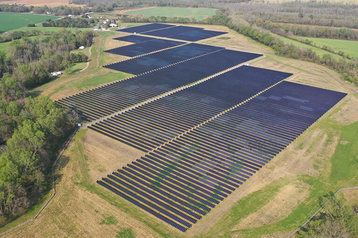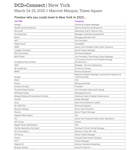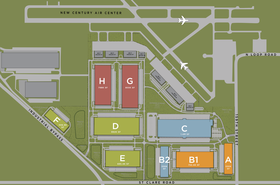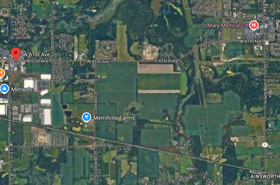Renewable energy growth in the US will continue under the new Donald Trump-led administration, said MUFG Americas CEO Kevin Cronin.
In an interview with Reuters, the head of the Americas arm of Japan's largest banking group argued that soaring demand from data centers that power artificial intelligence (AI) would be the major driver as data center operators and the utilities that serve them scramble for all available power.
"We're at the peak of the hype cycle of AI, but it's real, and it's big," Cronin said.
US data center power demand is projected to increase at 12 percent per year until the end of 2030, according to S&P Global.
While Cronin admitted that the new administration will likely be more supportive of fossil fuels, “that doesn't mean renewables go away," he said.
In addition, Cronin asserted that because renewable projects have long development timelines, often taking multiple election cycles to plan, finance, and build, “we try not to time our strategy around things beyond our control."
Masatoshi Komoriya, chairman of the board at MUFG's Americas subsidiary, who Reuters also interviewed, said that the bank had adopted a flexible approach incorporating renewables and fossil fuels to meet data center demand.
MUFG is the premier financier of renewable energy projects in the US. For the past 14 years, it has led the country in project finance loan volume.
The Inflation Reduction Act has significantly buoyed the US renewable sector over the past two years. As a result, the US utility-scale solar market is expected to add 437GW by 2032, while an average of 20GW of wind power is expected to be added annually over the same period.
Significant renewable development has occurred in data center hotspots such as Virginia and Texas. According to a report by Environment America, Texas was ranked first in wind generation and second in solar, with 199,836 GWh and 31,739 GWh of generation capacity in 2023, respectively. In Virginia, solar production saw a massive jump from 1,584 GWh in 2020 to 6,072 GWh in 2023.
Subsequently, data centers have been the dominant consumers of renewable energy in the US market. According to a November report from S&P Global, US data centers contracted upwards of 50GW of clean energy as of Q3 2024. Solar represents the dominant source of supply, with 29GW, followed by wind at 13GW.
Data centers have prioritized Power Purchase Agreements (PPA) as the primary form of power procurement within the US market. This year alone, Google signed four solar PPAs in Texas in 2024 for over 1GW of total capacity.
However, there are concerns that renewable energy will struggle to match the massive growth in demand, leading to a greater reliance on natural gas. According to S&P Global, 40 percent of new demand could be met by wind and solar energy, with the remainder by natural gas, adding another 40 million to 67 million tons of CO2 emissions by 2030.
As a result, several energy companies have begun exploring the possibility of using natural gas plants to power data centers. This month, ExxonMobil revealed plans for a 1.5GW natural gas-fired power plant dedicated to the data center market.
Also this month, Meta announced that its new $10 billion data center in Richland Parish, northeast Louisiana, would be powered by three combined-cycle combustion turbines, built and operated by Entergy Louisiana, with a combined capacity of 2.26GW.







